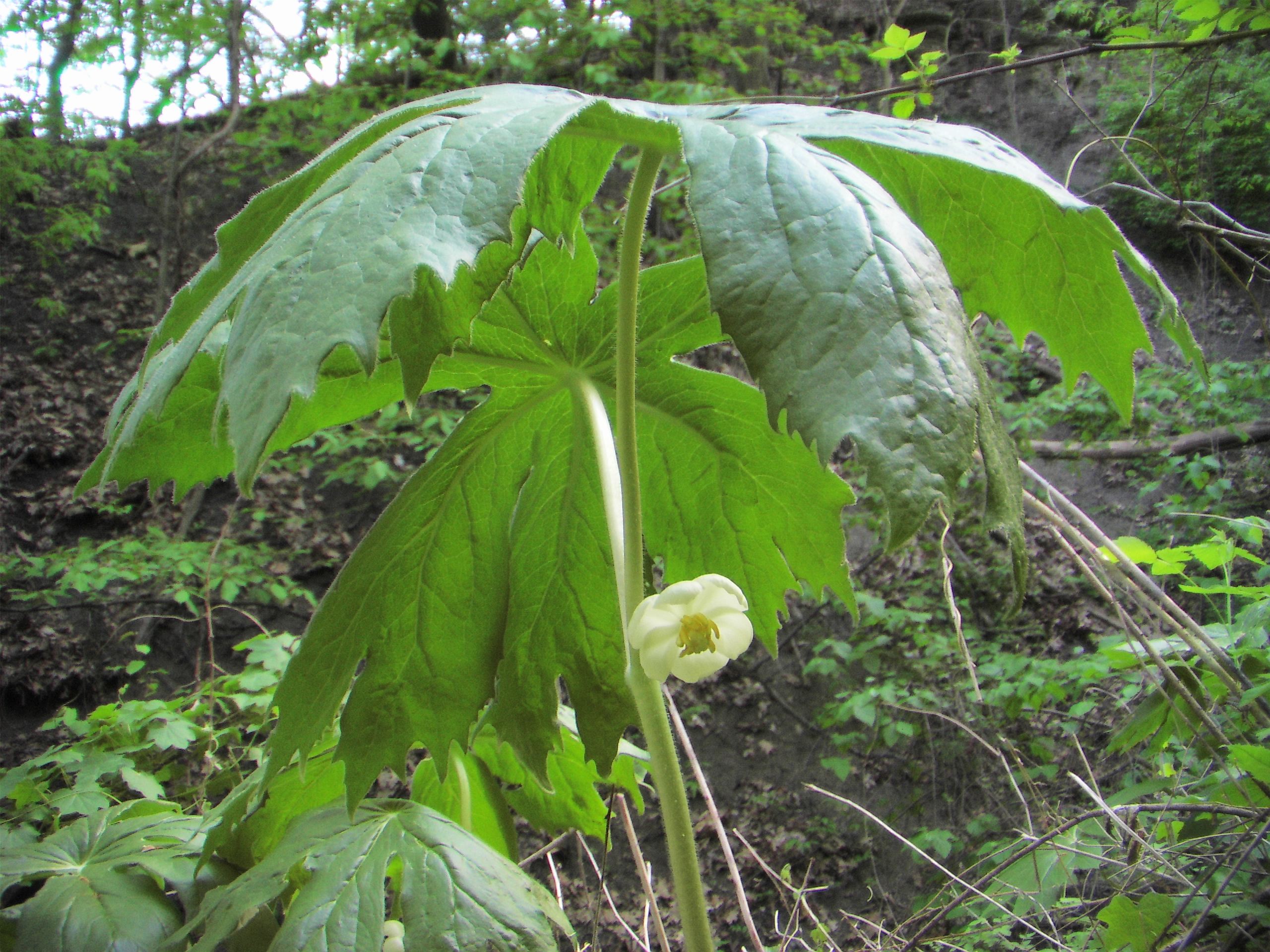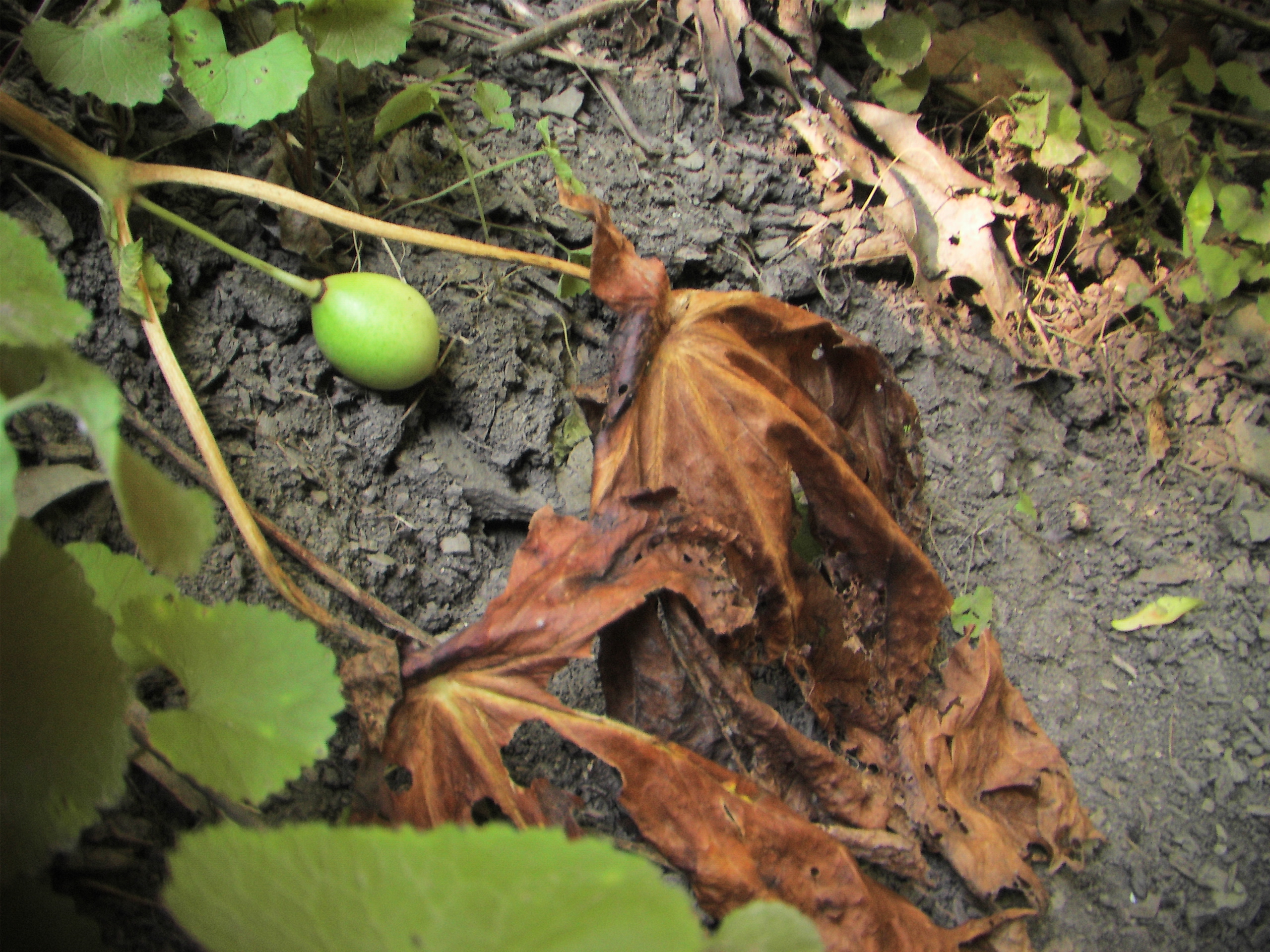Podophyllum peltatum
| Mayapple | ||||||||||||||
|---|---|---|---|---|---|---|---|---|---|---|---|---|---|---|
| Scientific classification | ||||||||||||||
| ||||||||||||||
| Binomial name | ||||||||||||||
| Podophyllum peltatum L. |



Please Take Over This Page and Apply to be Editor-In-Chief for this topic: There can be one or more than one Editor-In-Chief. You may also apply to be an Associate Editor-In-Chief of one of the subtopics below. Please mail us [1] to indicate your interest in serving either as an Editor-In-Chief of the entire topic or as an Associate Editor-In-Chief for a subtopic. Please be sure to attach your CV and or biographical sketch.
Overview
Podophyllum peltatum [1] (the mayapple) is a herbaceous perennial plant in the family Berberidaceae, native to the eastern part of North America.
The stems grow to 30-40 cm tall, with palmately lobed leaves up to 20-30 cm diameter with 5-9 deeply cut lobes. The plant produces two growth forms. The ones with a single umbrella-like leaf do not produce any flower or fruit. The plants having a twin leaf (rarely three-leaf) structure, however, bear a single white flower 3-5 cm diameter with six (rarely up to nine) petals, between the two leaves; this matures into a yellow-greenish fruit 2-5 cm long. The plant appears in colonies in open woodlands. Individual shoots are often connected by systems of thick tubers and rhizomes. [2]
Despite the common name mayapple [3], it is the flower that appears in early May, not the "apple", which appears later during the summer. The Mayapple is also called the Devil's apple, Hogapple, Indian apple, Umbrella plant (shape of the leaves), Wild lemon (flavor of the fruit), Wild mandrake, and American mandrake (shape of rhizomes).
According to Brian Fondren, the rhizome of the mayapple has been used for a variety of medicinal purposes, originally by Native Americans and later by other settlers. [2]
Toxicity
All the parts of the plant, excepting the fruit, are poisonous. This plant can kill humans within 24 hours. Even the fruit, though not dangerously poisonous, can cause unpleasant red/yellow diarrhea. The plant contains podophyllotoxin [4], which is used as a cytostatic and topically in the treatment of genital warts.
Notes
- ↑ Template:ITIS
- ↑ 2.0 2.1 Fondren, Brian T. "Mayapple". Ethnobotanical leaflets. Retrieved 2006-06-03.
- ↑ Podophyllum peltatum at USDA PLANTS Database
- ↑ Moraes, R.M., H. Lata, E. Bedir, M. Maqbool, and K. Cushman. 2002. On American Mayapple as practical source of podophyllotoxin p. 527–532. In: J. Janick and A. Whipkey (eds.), Trends in new crops and new uses. ASHS Press, Alexandria, VA.
References
- Blanchan, Neltje (2002). Wild Flowers: An Aid to Knowledge of our Wild Flowers and their Insect Visitors. Project Gutenberg Literary Archive Foundation.